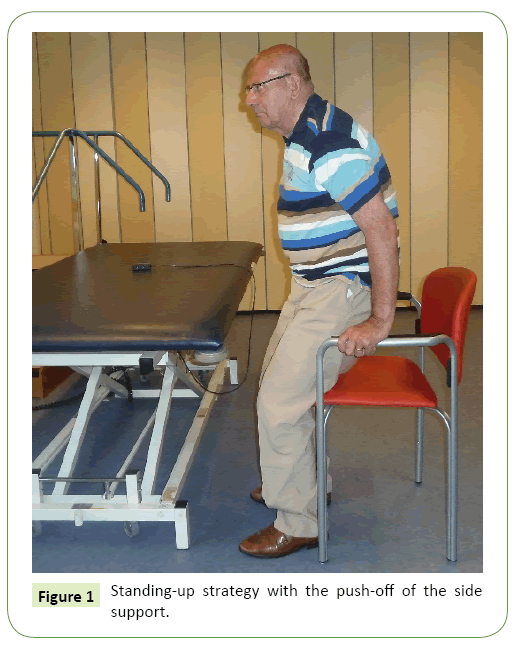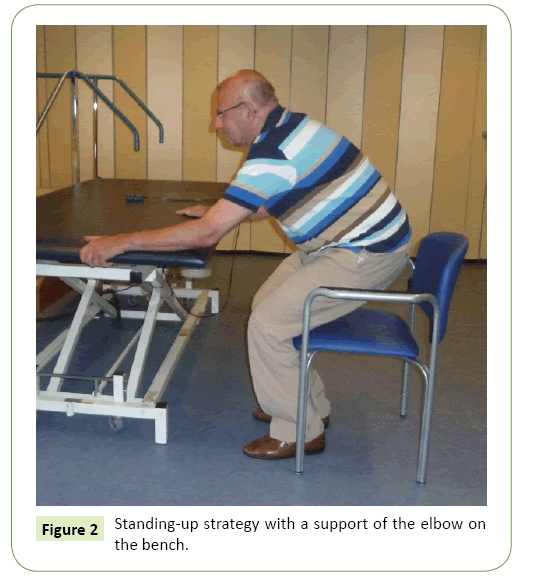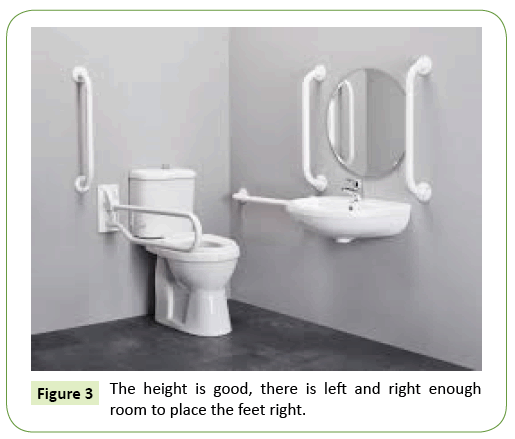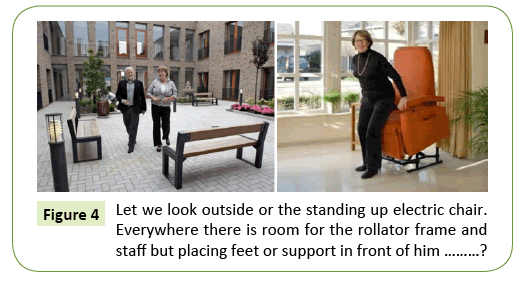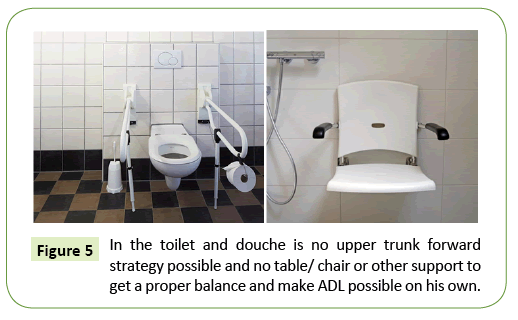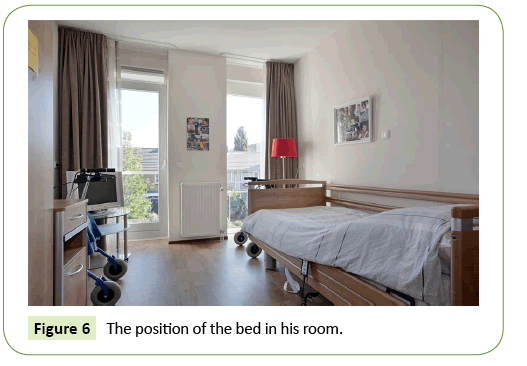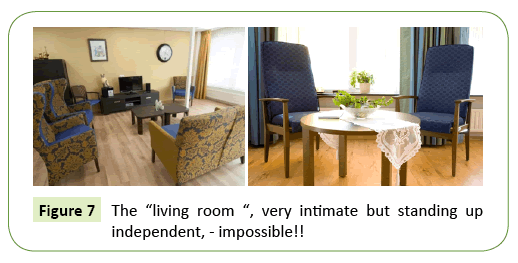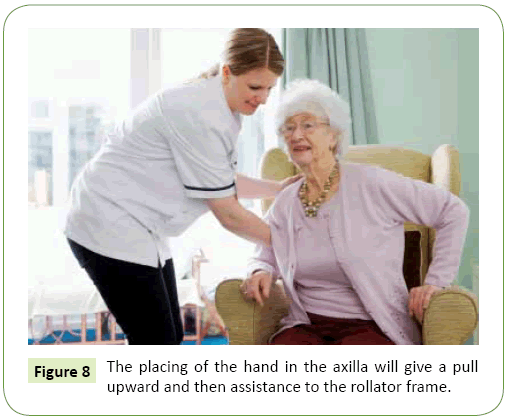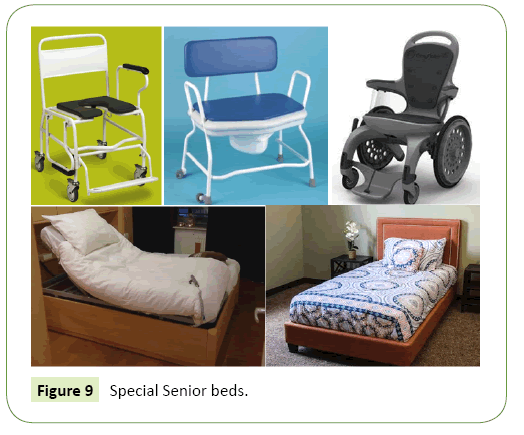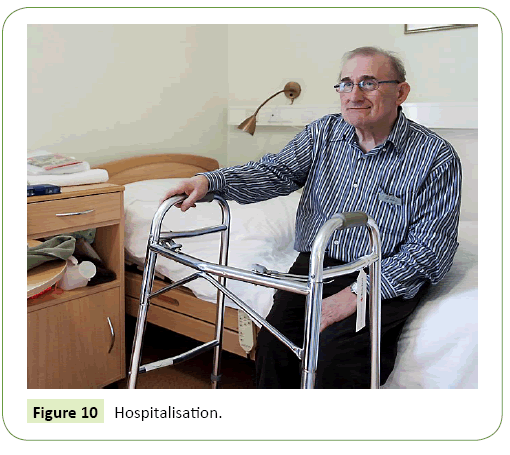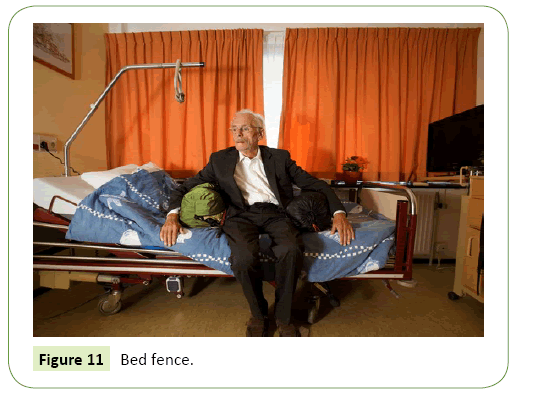ISSN : 2393-8854
Global Journal of Research and Review
The environment in long-care facilities (Nursing home) decrease the possibilities to move independent !
Fysiotherapeut Nursing Home, Klein Waelwick, The Netherlands
- *Corresponding Author:
- Jan van de Rakt
Fysiotherapeut Nursing Home
Klein Waelwick, The Netherlands
Tel: +31-0487-509-666
E-mail: jan@vanderakt.nl
Received Date: October 29, 2018; Accepted Date: November 12, 2018; Published Date: November 14, 2018
Citation: de Rakt JV (2018) The Environment in Long-Care Facilities (Nursing Home) Decrease the Possibilities to Move Independent!. Glob J Res Rev Vol.5 No.2:10
DOI: 10.21767/2393-8854.100039
Abstract
Move independent is essential for an optimal living quality for elderly at home but that is also the case for elderly living in a long-care living institution. There the environment has a crucial part, certainly when the power is decrease. Everyone agree with this, but act us on the right way? In this article we have visit an lot of rooms and see chair, toilet, douche and bed to look of standing up and stand was optimal possible with an optimal support. Regrettable the opposite was the reality on this moment. The work space of the nursing staff was always the first priority and create situation that the independency for the resident wasn’t possible.
Keywords
Standing-up strategy; Environment; Adjustments; Aid material
Introduction
“Everything in this Long-Care-Living facility is “build to inhibit my movements”: was a quote of a former person living in a Nursing home”.
There are situation that it is dangerous to move independent [1-4]. The rooms, often also the camber of the resident is so arranged, that the nursing staff can move in every direction without obstacles, but that create more space without support and increase space and the risk for fall and makes his independency difficult.
Of course is the care-staff afraid that something is going wrong. But this “caring” culture has often developed in a care: “not-move or only move, when the nurse is there” as the practice-level. Still much people are working on a change in that attitude/culture. It is therefore good to look around in this Long-Care Facilities to see which elements makes independent moving around the Long- Care Facilities better possible or makes this more difficult. Realize that a little assist means that: “The independency is gone”!
Standing up and Stand is Dependent of the Environment
With this article in your hand make an environment-check and central we set in this article:
Standing up
Standing up is one of the heaviest and difficult ADL activities, that elderly through the day very often needed to get somewhere else. When this is possible, the independency is there. The first what all elderly will do is choosing for a chair that is higher. And that height is always so that the hip stands higher than the knee and the second one that this sit-art stands horizontal. When standing up ask much power than will this two adaptation care for a standing up with less power and adjustment in the chair, to get in a standing position. Realize that a sit-part that is back lower than on the front; ask for an extra heavy activity to get to the front of the chair.
First check: “All sit/standing up situations must be equal”.
Standing up is a complex and heavy movement: Standing up start with a movement of the trunk in the hip-joint and when this trunk movement passed the 90°, the feet are placed back without weight. And the position of the feet is behind the knee. The movement of the trunk goes through and we see an extension in the lumbar region of the spine and the buttock is coming of the chair. There is than no extension to stand because first there must be a movement in the ankle to create the correct balance on the feet. After that adjustment the movement can complete [5].
This is normal standing up of young adults and healthy elderly: Elderly that have problems with standing up and balance will seek for a solution that the arms take more weight and more control. A supporting point in front (Figures 1 and 2) gives more support for the trunk movement to the front, but also makes the correction movement in the ankle not necessary. The extension in the knee is also less heavy and the balance is well preserved. What also often immediately goes good is the placing of the feet (behind the knee) and that is often not the case when they tried to pushoff of the side-support of the chair [6]. And their balance is well controlled behind the table and that is almost never the case when people push themselves up through the side-support of chair and they must than tried to create an balance without an support or goes to an support to the front, still this part can be very dangerous and people are afraid for this situation (Figure 1).
The support cannot release because there is too much weight behind the feet. The power in the leg is so little that walking to the back isn’t possible that he must push-off to grasp the bench. This can create a dangerous situation because the chair can push away and/or the person fall back. This chair is higher than necessary but still is this strategy not the strategy that makes him independent. He uses the Upper Trunk Backward strategy.
Still in Long-Care facilities is this often the only strategy that is possible. The push-off strategy with the arms and then search for balance. Strange, strategies where elderly with standing up/ balance problems almost never choose. Of course is the “pushoff” strategy good when no danger occurs, but in Long-Care facilities the elderly cannot perform this independent. There will be a moment that this strategy isn’t working anymore because the power and the mobility aren’t there anymore. Therefore the Long-Care facility must be arranged for the alternative strategy (Figure 2). The first automatic reaction is the placing of the feet behind the knee and that isn’t the case on Figure 1. With the elbow on the table he pulls and stands up of a lower chair and is immediately in balance. That pulling gives now a further movement of the trunk to the front and makes adjustment in the ankle not necessary and there is no searching for a stable standing position. He use now the upper Trunk Forward Strategy and stand up independent and can go where he want at every moment, but there must be an table in front of him.
The solution to place a rollator frame in front of the resident isn’t a solution, because that makes the trunk movement to the front not possible and gives no support in seeking for a good balance.
On the contrary it creates a dangerous situation. Supporting on side support tried to grasp the rollator frame with no good balance on the feet, is a “jump in the depth”. Still everywhere in the Long-Care facilities there is always room for the rollator frame!
That means, that the creation of a situation for the resident that he must wait for someone to help him with standing up and balance in stand. Then he can grasp the rollator frame and go but the independency is gone.
This resident can now independent stand up and walk away. Walk along the side of the bench and take than the rollator frame.
But is this possible in every room in the Long-Care-Living facility, his “home”?
1. Is there everywhere a table /chair that able him to use this strategy.
2. When there is support on the wall, can he use this to get to the front and make the upper trunk
3. Forward strategy and can be used it for creating a balance in stand (Figure 3).
4. The chair (toilet, wheelchair, bed) must be of a good height (The knee lower than the hip).
5. The sitting part (also the wheelchair) must be horizontal.
6. Everywhere there must be enough room to place the feet under and behind the knee.
But where will someone place his hand when he uses the Upper Trunk Forward Strategy? On the sink, but why? The support left is not right to get the strategy working and the other support is to high therefore is the edge of the sink the best place. Further both supports ask for a lot of exhortation and that is often impossible through shoulder complaints (Rollator frame) (Figures 4-6).
Again no support in front of the bed, there is well a good parking place for the rollator frame. This is a nice bed with a nice wooden bed fence. But that bed fence will make a proper placement of the feet impossible.
Therefore the situation isn’t good for our resident because he cannot use his Upper Trunk Forward strategy and must wait for help. But there is a difficulty, when he uses a chair/table in front of him he complains of pain in his legs. That pain is caused through that nice bed-fence that hurt his backside of his upper legs (Figure 7).
A recent investigation has focused our attention on this situation because here were the most fall-incidents [7].
Intimate but made for sitting and stay in that position. And the chairs have all a hillside to the front to brace the standing performance. What we see that staff must assist but the way that is happen will make this resident complete dependent.
The placing of the hand in the axilla will give a pull upward and then assistance to the rollator frame. Therefore this lady must wait till the staffs have time!! And… the Upper Trunk Forward strategy isn’t possible anymore and will be forgotten!! (Figure 8).
Then there are little “details” that makes thinks worse: Look to the electric standing up chair, the front is closed and makes a proper placement of the feet behind the knee impossible. But also toilet-, douche – wheelchair are often so constructed that placement of the feet is difficult and make the standing up possibilities more difficult. Certainly the Upper Trunk Forward Strategy is getting more difficult.
Special senior bed: A complete closed site part of a bed makes a right foot placement impossible and sitting on the edge than the balance is a great problem. But there is optimal place for staff and a rollator frame (Figure 9).
Hospitalization: “Hospitalisation” this two gentlemen!! (Figure 10). Nursing Staff: “Both can do it but…... “Only a little push and they stand, but nothing comes on their own“Why?
Standing up cause pain and the walking assistance don’t help! The push means that he doesn’t have to move so far to the front and has less pain, but ….. His independency is gone. The conclusion of the staff: “No initiative”!!
Bed fence: Look to this bed fence! Even this attitude will give pain and now also get on his feet without a support in the front! (Figure 11). Now we know how important movement is for elderly and especially elderly with dementia [8-12], are we not alert how the Long-Care-Living facility in constructed and which materials we give the resident to hold their independency on an optimal level. On the contrary we make it much more difficult.
The control by the resident: It is time that we realize that the environment must help the resident to move independent and that this control must be by the resident himself.
The discussion of the toilet must be so high, this discussion isn’t for the builders and management. This decision is for the resident that lives there because he will get from the toilet and stand stable to dress himself. That mean: that the height must be good for that resident and also the environment, than is independent standing up and stable standing possible. And with a support to do get his trouser proper.
Conclusion
When we worry that a toilet that is height gives problems with bowels than make the toilet electric adjustable but never makes the resident dependent from others. The resident has the control over his “home”. The same is counting for the corridor; no support is any option because no support makes standing up, stand and walking difficult and installs good support where they can hold without complaints of the fingers.
References
- Sinoo M (2010) Elderly and visual impairments. Physios 2: 26-31.
- Hoof JV (2012) Longer and safe living at home with dementia. Physios 4: 50-54.
- Laarhuis A (2016) Langer thuis wonen met aangepast sanitair Nederlands tijdschrift voor Geriatriefysiotherapie. Jubileum Editie 30: 18-20.
- Osch LN (2016) De wondere wereld van dementie Nederlands tijdschrift voor Geriatriefysiotherapie. Jubileum Editie 30: 24-29.
- Rakt J van de (2015) Maintaining the dynamics of standing up in the elderly. Physios 7: 38-45.
- Rakt J van de (2013) Balance training in the elderly. Physios 5: 44-52.
- Locations of falls among older adults in long-term care and its association with resident locations. Presentation 2017.
- Scherder E (2014) Do not let your brain sit. Athenaeneum – Ploak & van Gennep Amsterdam.
- Robinovitch S, Feldman F, Yang Y, Schonnop R, Leung PM, et al. (2013) Video capture of the circumstances of falls in elderly people residing in long-term care. The Lancet 381: 47-54.
- Erickson K (2012) Physical activity, Brain plasticity and Alzheimer’s disease. Arch Med Res 43: 615-621.
- Bossers W, van der Woude LH, Boersma F, Hortobágyi T, Scherder EJ, et al. (2015) A 9- week aerobic and strength training program improves cognitive and motor function in patients with dementia: A randomized, controlled trial. Am J Geriatr Psychiatry 23: 1106-1116.
- Groot C, Hooghiemstra AM, Raijmakers PG, van Berckel BN, Scheltens P, et al. (2016) The effect of physical activity on cognitive function in patients with dementia: A meta- analysis of randomized control trials. Ageing Res Rev 25: 13-23.
Open Access Journals
- Aquaculture & Veterinary Science
- Chemistry & Chemical Sciences
- Clinical Sciences
- Engineering
- General Science
- Genetics & Molecular Biology
- Health Care & Nursing
- Immunology & Microbiology
- Materials Science
- Mathematics & Physics
- Medical Sciences
- Neurology & Psychiatry
- Oncology & Cancer Science
- Pharmaceutical Sciences
